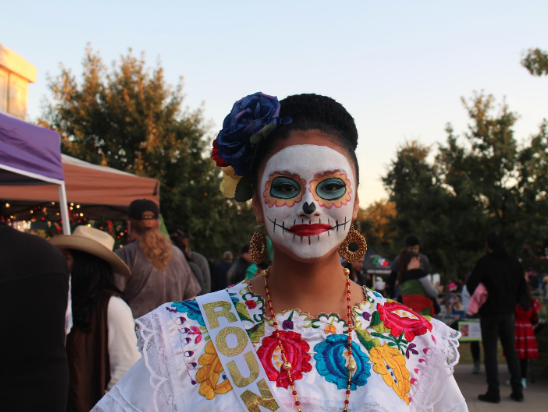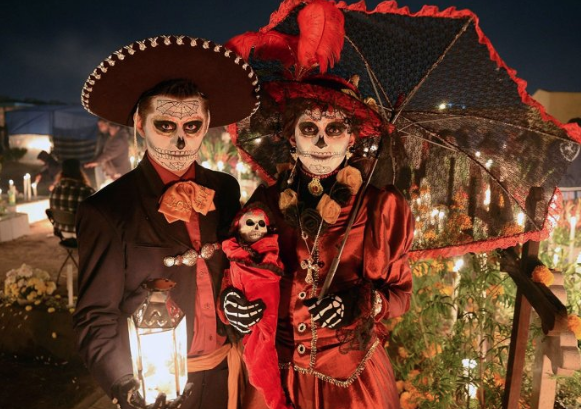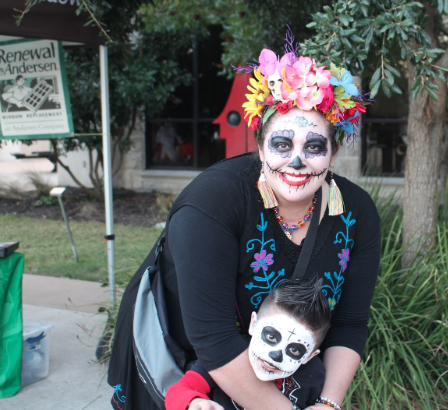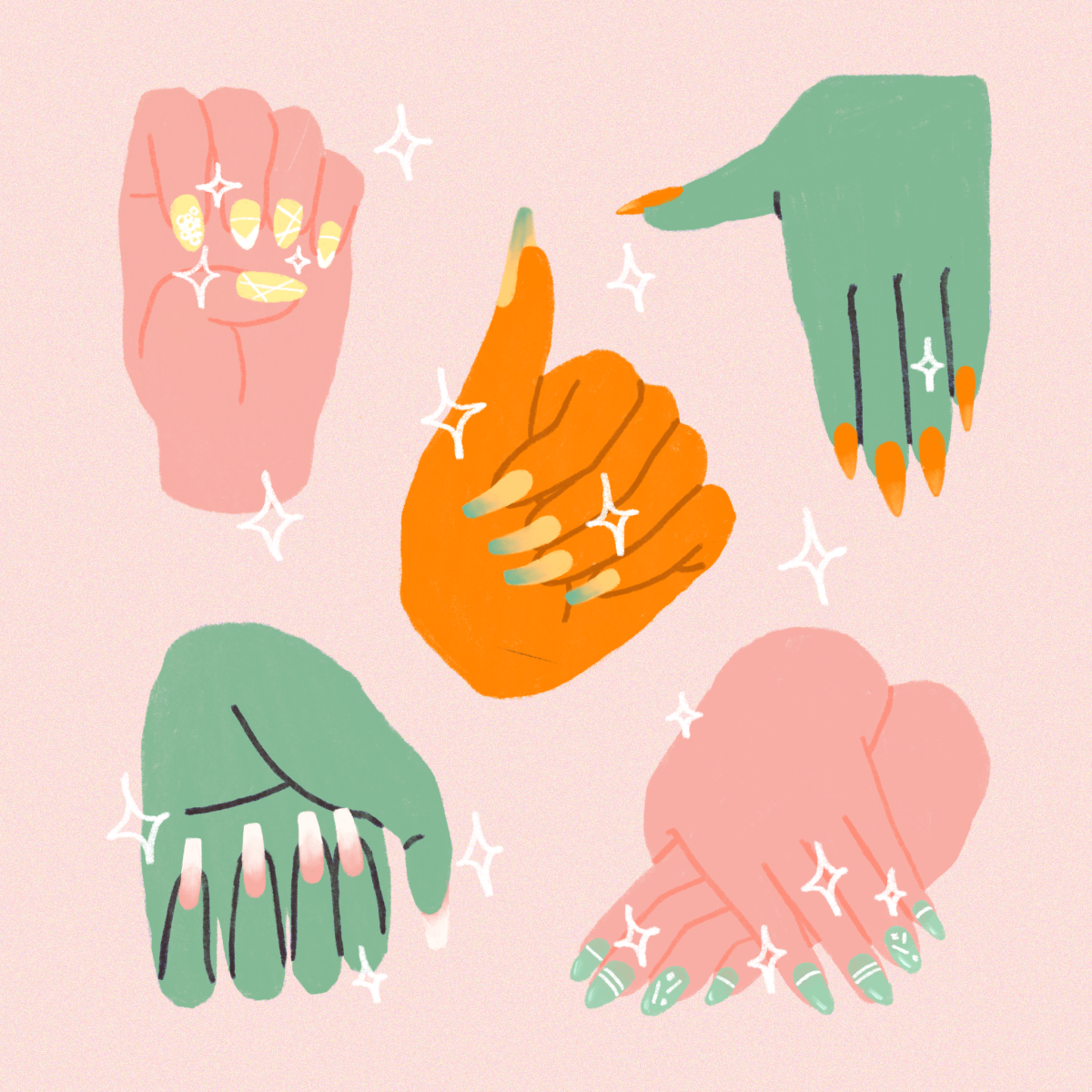Explore the cultural meaning behind the iconic Mexican holiday, Dia de los Muertos, through outfits and makeup.
By Roxanna Sanchez/ @_roxannasanchez
Each year, people across the country anxiously wait for October to come, many planning their Halloween costumes months in advance. However, the dark and haunting themes that the eerie holiday elicits is soon overshadowed by a jubilant, vibrant and cultural explosion that is Dia de los Muertos. The three-day Mexican holiday celebrates the living and the dead. From October 31 to November 2, Mexican culture entrances many with a beautiful display – a spectacle honoring their dearly departed by rejoicing and wearing rich and electric colors. They organize exquisite floral arrangements and present striking feats of makeup and extravagant traditional Mexican clothes. Women dress up as “La Catrina,” a beautifully dressed female skeleton that is now an iconic symbol of the holiday.
Over the weekend, Austin hosted copious events for Día de los Muertos; however, I decided to travel right outside the city to Round Rock, Texas, for an even bigger, televised celebration at the Centennial Plaza.
Upon first entering the event, I was overwhelmed by the beautiful display of colors, from dresses and children’ face paint to the massive altars built in the center of the plaza. Women and children donned traditional embroidered dresses with floral designs or stripes, similar to the Mexican flag. While some choose to go for simple outfits, letting the makeup and headpieces do the talking, others opt for extravagance from head to toe, wearing voluminous Victorian dresses like some of the earlier “catrinas” and “calacas” or skeletons.
Photo courtesy of Newsweek.com
Ilea Balderston, an attendee of the festivities in Round Rock, went the more traditional route. For the event, Balderston based her outfit on her grandmother’s traditional dress.
“The whole point of Dia de los Muertos is to honor the dead, so I chose my grandma. Because she loved roses, I did everything rose themed,” Balderston said.
Though the dress and mariachi outfit are a must, the Día de los Muertos celebration is mostly synonymous with the catrina and “calavera” or skull-like makeup topped with a dramatic headpiece or flower crown.
Photo by Roxanna Sanchez of a mother and son at the Dia de los Muertos celebration in Round Rock, Texas.
At the festival, lines wrapped around multiple face painting booths. People waiting to receive the calaca treatment and join the fun. Though nearly everyone had their face painted, not one looked like the other. Sequins, beads, jewels, floral designs and vibrant colors decorated faces. To the untrained eye, this may seem like simple self-expression, but the makeup style is personal and custom. Styles range from feminine to haunting to simple – even half painted faces represent both the living and the dead. There is a grander meaning behind the images, designs and colors. For example, the color red represents blood and life while white represents spirit, hope and purity.
Photo by Roxanna Sanchez of festival goers who are wearing the half-and-half skull-like face paint style.
For Balderston, Dia de los Muertos is about intent.
“Know what you’re painting on your face,” Balderston says. “Know what colors you’re painting on, but whatever you do, if you do it with meaning and a little bit of humor, then you’re not gonna go wrong. It’s not a very strict holiday.”
Because of its arresting visuals, the holiday transcends the Mexican culture and now captures the world’s attention. People are fascinated by the intimate and joyous way in which death is viewed and celebrated, and also by the incredibly intricate outfits and makeup people wear in honor of their deceased loved ones.









































